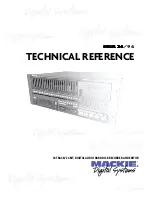Reviews:
No comments
Related manuals for PowerEdge XR2

KX-NCP Series
Brand: Panasonic Pages: 16

PS-1208MFg
Brand: Edimax Pages: 93

NETWARE 6
Brand: Novell Pages: 152

PeNet 2127
Brand: Patton electronics Pages: 16

xSeries 235
Brand: IBM Pages: 66

H SERIES RS/6000
Brand: IBM Pages: 424

SRPM8
Brand: Intel Pages: 32

S7000FC4UR - Server System - 0 MB RAM
Brand: Intel Pages: 13

LWS405A
Brand: Black Box Pages: 1

LWS401A
Brand: Black Box Pages: 2

H8DGT-HLF
Brand: Supermicro Pages: 72

H8DSL-HTi
Brand: Supermicro Pages: 78

Supero H8DA8-2
Brand: Supermicro Pages: 82

Intesis INMBSOCP0010100
Brand: HWS Pages: 18

RM-126X
Brand: SAFARI Pages: 28

GuruPlug Server Plus
Brand: GlobalScale Pages: 10

MDR 24/96
Brand: Mackie Pages: 110

Blackjack NAS DW-BJNAS4T
Brand: A1 Security Cameras Pages: 8

















